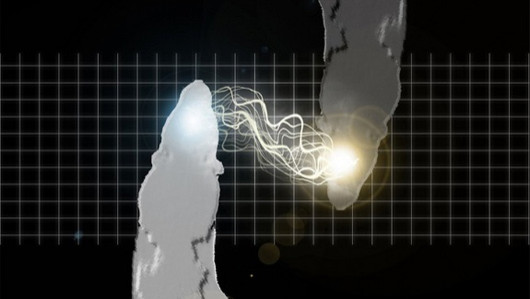Rat Mind Meld: Microelectrodes Allow Brain Activity To Be Transmitted Over Internet

Duke University neuroscientist Miguel Nicolelis keeps on giving superpowers to rats. First, he installed devices in their heads that let them "touch" infrared light. And now, his latest research has allowed him to meld the minds of two rats on different continents.
As Nicolelis and his colleagues describe in their paper, published on Thursday in the journal Scientific Reports, the first step in welding the thought pathways of two rodents together was to train the rats in a simple maneuver: pressing a lever when an indicator light flashed on, which rewarded them with a sip of water.
Next came a bit of weirder science. The researchers implanted arrays of microelectrodes, each one many times thinner than a human hair, into the brains of two rats in the area that processes touch information. One rat was designated an “encoder” and received a light cue telling it which of two levers to press to receive a food pellet.
When the encoder rat responded to the light cue, its brain activity was transmitted through the microelectrodes into a computer, which turned the activity into a simple signal: one single pulse for one lever, several pulses for the other lever. This signal was then delivered electronically into the brain of the other rat, dubbed “the decoder.”
The cues from the encoder rat prompted the decoder rat to choose the correct lever nearly 70 percent of the time -- not perfect, but still better than pure chance.
“It’s not telepathy. It’s not the Borg,” Nicolelis told Ed Yong of Nature News. “But we created a new central nervous system made of two brains.”
In a second set of experiments with the same brain-brain interface, Nicolelis and his team trained the rats to use their whiskers to tell narrow and wide openings apart. If the rat encountered a narrow opening, it was trained to poke its nose to the left of a chamber to receive a reward; when it encountered a wide opening, the rodent had to poke its nose to the right.
Again, pairs of rats were assigned as encoders, which actually encountered the openings, and decoders, which received the brain activity pulses. In this setup, the decoder rat poked its nose in the right direction about 65 percent of the time.
The brain signal transmission worked even when one rat was in North Carolina and the other was in Brazil, and the signals were transmitted over the Internet.
While many scientists said the experiment was a neat proof-of-concept, others were a little skeptical.
“Although this may sound like 'mental telemetry,' it was a very simple demonstration of binary detection and binary decision-making,” University of Pittsburg neurobiologist Andrew Schwartz told Nature. “To be of real interest, some sort of continuous spectrum of values should be decoded, transmitted and received.”
Schwartz also pointed out to the New York Times that the decoder rat achieving a near-70 percent success rate was not that much better than the 50 percent success rate expected with pure chance.
Regardless of the critiques, Nicolelis is forging ahead with further brain experiments, planning to link four mouse brains together in a future setup. Monkey brain melds that would allow the primates to play games with each other are also on the horizon.
SOURCE: Pais-Vieira et al. “A Brain-to-Brain Interface for Real-Time Sharing of Sensorimotor Information.” Scientific Reports published online 28 February 2013.
© Copyright IBTimes 2024. All rights reserved.





















